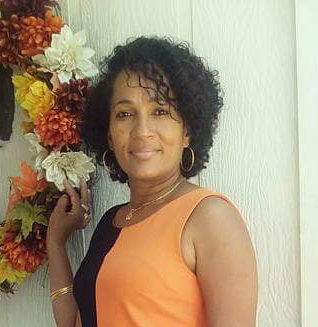By Ornetta Waldron
Natalie is a micro-enterprise owner and a single parent of three school-age children. She had been able to secure a loan to purchase equipment for a catering business that she operated in a kitchen adjacent to her home. Mike had borrowed money from a friend to give him a start with his dog food ‘hustle.’ Joan had sold confectionary outside a primary school for close to eight years. What do they all have in common? They are among the many small business owners facing the consequences of COVID-19, wedged between the proverbial ‘rock and a hard place,’ afflicted by a mindset of hopelessness.
Nor are they alone in that condition. There are others, these days, who have been enveloped by the prevailing cauldron of negative events. Signs of pressure and worry are evident all around as individuals and families struggle to cope in this unfolding COVID-19 era. The struggle grows more intense amidst a sustained increase in the numbers of confirmed cases and the inexorable rise in socioeconomic challenges.
The coronavirus pandemic disease has transformed lives and impacted mindsets in various ways… spiritual, emotional and psychological. It has impacted all ages and social classes. The rampage of the pandemic has respected no boundaries. Responses are limited by an insufficiency of the tools with which to mount those responses. Health-related concerns have created increased financial strain amidst the rush to acquire the protective requisites. Simultaneously, here in Guyana, we have had to contend with the effects of the fallout arising out of the controversy associated with the outcome of the March 2020 General Elections. In many instances, the twin challenges had given rise to a sense of hopelessness, a feeling of being afflicted by a complex and never-ending tragedy.
Hopelessness can be described as an emotion characterised by despair, a condition that has given rise to an absence of optimism. Hopelessness is invariably attended by an absence of expectation of good or a sense of ‘a better tomorrow’. Authors have associated hopelessness with the manifestation/appearance of emotional stress responses: intense anger, anxiety, mistrust, depression, emotional numbness, and irritability, among other states of mind. Paradoxically, it is felt that hopelessness can be used as a starting point for creative responses, inducing engagement, inclusion, and resilience.
Hope is arduous, agreeable, and attainable. Author Kitty te Riele in her 2010 article “Philosophy of hope …” posits that hope should not be confused with wishing, as if having hope will serve as a “magical palliative.” Rather, she contends that the philosophy of hope constitutes “a positive culture, a focus on possibility, a community of hope and critical reflection.” It involves starting from a place where attention is focussed on what is attainable – what is achievable. Hope, she contends, is a crucial resource that fosters actions. A philosophy of hope focusses on alternative possibilities rather than situational occurrences.
The language of hope is powerful and engaging as was demonstrated during Barrack Obama’s 2008 campaign for the presidency of the United States of America.
The Strengths’ Perspective in Social Work is an approach that can be applied to support individuals in these challenging time. This approach is premised on the perspective that no matter how harsh the environment, it is lush with assets and resources. One technique that can be utilised is taking account for and summoning up the strengths, resources and capacities of individuals, families and communities and putting them in the service of meeting needs, minimising risks, and realising hopes and dreams. It is said that dreams fuel hope, hope fuels intentions and intention in turn fuels actions. Social workers engage individuals, families, and communities in order to create hope. Hope unites people, moving them in the same direction. This alliance becomes a powerful resource in the process.
What advice can be given then to the person who has lost hope – perhaps his/her means of earning in a post COVID-19 era… people like Natalie, Mike, and Joan. You can say to those persons… “Look around, identify the strengths in your environment, your personal strengths, those of your family and get creative. Take advantage of technology! You can be the hope for someone else even as you foster hope for yourself. Start to dream again, dreams nurture hope, hope fosters intentions and intentions make things happen!” Fostering hope in someone else is therapeutic.
Another therapeutic activity that has been proven as a task initiator is horticulture therapy. Eons ago Persians and Egyptians took strolls in their gardens in order to benefit from the therapeutic effects of so doing, perhaps, as they pondered their next courses of action. Horticulture therapy, aside from relieving anxiety, can also provide alternatives to an attainable future/goals. Individuals who have resorted to investing their energies and resources in planting/replanting kitchen gardens and growing their ornamental collection have reported how rewarding the pursuit has been. Restrictive measures (arising from the COVID-19 pandemic) that have been implemented by the authorities have initiated a trend of creativity and innovation unlike any ever seen. Human beings have the uncanny ability to respond to and survive the most traumatic events and crises and to recover.
Readers of this article can call the Ministry of Social Protection (227-0979) for psychosocial support to help respond to the covid-19 pandemic.
The University of Guyana has partnered with GTT to offer psychosocial support to the public through their toll-free help lines 24 hours a day. Why not reach out and talk to someone!
The writer is currently pursuing a Masters’ Degree in Social Work at the University of Guyana









